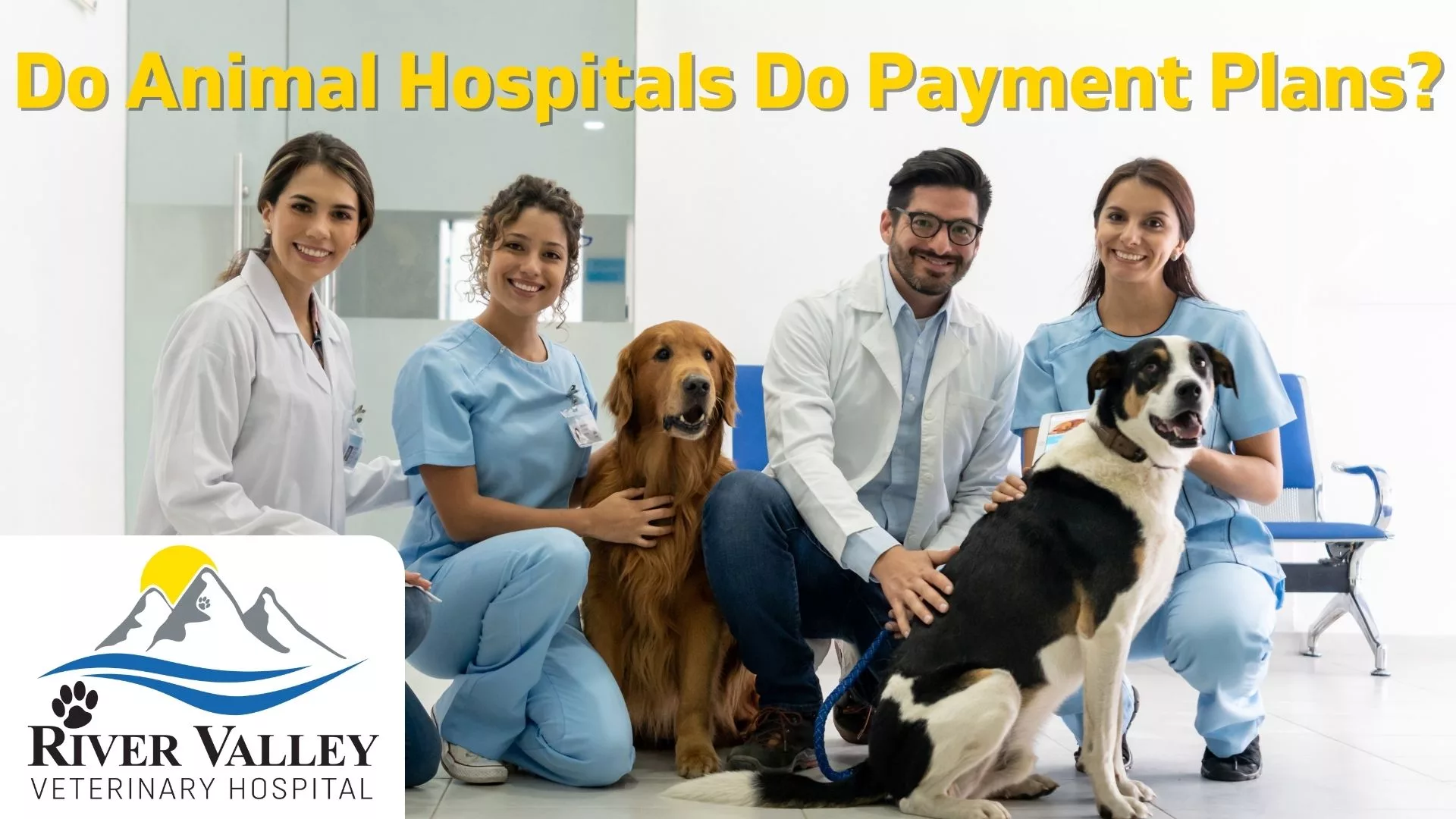Animal Hospital | Do Animal Hospitals Do Payment Plans
Any pet owner would tell you that they would do anything for their pets, says animal hospital owner Dr. Richard Linkenheimer. From buying the best food and toys, long walks and games of fetch. To taking their pets to the veterinarian, or in emergencies, the animal hospital.
While going to the animal hospital for an emergency is every pet owner’s worst fear. But when they find themselves needing to do the hard thing for their pet cats and dogs, it’s an easy choice. Unfortunately, it’s not always as easy to pay for whatever emergency procedures or tests that are needed.
The only thing worse to a pet owner than their cat or dog being sick or hurt, is not being able to pay for their pet’s treatment. Therefore, one of the most common questions pet owners have for their animal hospital is whether they have a payment plan. The good news is that River Valley Veterinary Hospital, located in Springdale does offer payment plans.
Regular Veterinary Care Is Important
However, the best way to help pay for veterinary treatments at animal hospitals is to help your pet never need emergency services. Regular veterinary care is extremely important to your pet’s overall health. Schedule regular check-ups with your veterinarian to ensure your pets are in good health. Regular vaccinations, parasite prevention, and overall wellness exams can help prevent emergencies and detect any potential health issues early, so that you’re not paying expensive veterinary bills years later, because the problem has become much worse.
And if you need payment plans for your regular veterinary services, River Valley Veterinary animal hospital will be more than happy to help set that up. They believe that owning a pet shouldn’t be cost prohibitive. Let them know you would like payment plans when you set up your first appointment.
Help Prevent Pet Emergencies
In addition to regular veterinary care, you can also do many things to help prevent a pet emergency in the first place. Making your home as safe as possible for your cats and dogs can help you avoid potential situations that will require an emergency visit to your animal hospital that will end up costing more money than you can afford.
Look around your home and yard, and be aware of the most common dangers to your pets to minimize or completely eliminate them. Choking hazards, poisonous plants, a safe yard and American Veterinary Medical Association approved chew toys and treats just to name a few. Here are more things to take into consideration to ensure your pets are as safe as possible every day.
Another important emergency prevention tip, is to have products on hand that are designed to keep your pet safe. Snout screen for example will help your pet avoid harsh sunburns on their most vulnerable skin. Paw balm to help them avoid scorching their paws on the hot pavement, and prevent salt burns on winter walks. Have some pet friendly medicated spray on hand to relieve your pet’s itching and scratching caused by dry skin, flea bites, allergies and hot spots. These things can not only prevent some emergencies, but they can also keep your cat or dog as comfortable as possible while you are en-route to the animal hospital.
Poison Control: Know Common Toxins
Keep potential pet toxins out of reach. Ensure that harmful substances, such as household chemicals, medications, and toxic plants, are securely stored and inaccessible to your pets. Be aware of what are toxic to your animals. While many people will know that household cleaners represent a danger to their cat or dog. But do many people realize that the artificial sweetener xylitol – which is found in many foods, gums, breath mints and toothpastes – is toxic to dogs?
Also many common indoor and outdoor plants and flowers like lilies, spider plants, poinsettia, and aloe vera are toxic to cats. Fabric softener sheets, common painkillers such as acetaminophen and ibuprofen are also toxins we may overlook. Even common foods like chocolate, grapes, raisins garlic and onions are also toxic to our pets.
Know Pet Poisoning Signs
Not only should you learn what potential toxins are, and keep them out of your pet’s reach. It’s best to simply avoid bringing them into your house in the first place. But you should also be aware of the signs of pet poisoning, so you will be able to bring them in to your animal hospital quickly. The most common pet poisoning signs are:
- Upset stomach and diarrhea
- Vomiting
- Lethargy
- Loss of appetite
- Drooling
- Excessive thirst or urination
- Weakness
- Any behavior you would consider abnormal
Animal Hospital | Safe Shelter and Evacuation Plan
Identify pet-friendly shelters or hotels in your area that allow pets in case you need to evacuate. Have a plan for transporting your pets, including appropriate carriers or leashes. Include your pets in your emergency evacuation plan. Determine how you will transport them, where they will stay, and have a designated meeting point for your family and pets. Have a kit prepared with food and water, leashes, blanket, carriers, medications, health related documents, such as medical history and vaccinations. This way, if you have to leave quickly, you’re ready.
Prepare For Pet Emergencies In Advance
When it comes to emergency procedures for pet cats and dogs, there are several important considerations to ensure their safety and well-being. Here are some key emergency procedures for pets:
Know First Aid and Carry a Pet First Aid Kit
Have a pet first aid kit on hand, and bring it with you on walks, during daily activities and when you travel with your pet. While it won’t have many different things from your standard first aid kit, pet first aid kits have differently sized bandages, which are better for treating the smaller injuries a cat or dog are likely to have. A pet first aid kit will also contain an instruction guide on how to use the items in the kit to care for pet injuries.
Pet owners should familiarize yourself with basic pet first aid techniques. This can include knowledge of CPR, wound care, choking procedures, and how to respond to common emergencies. Consider taking a pet first aid and CPR course to learn these skills.
Identification
Make sure your pets have identification, such as a collar with an ID tag containing your contact information. Microchipping is also highly recommended, as it provides a permanent form of identification that cannot be lost.
Emergency Contact Information
Keep a list of emergency contact numbers, including your veterinarian, an emergency veterinary clinic, and animal poison control helpline. Have these numbers readily available in case of an emergency. This emergency contact information should be with your pet’s first aid kit as well as with the evacuation preparedness kit.
A bit of knowledge, and some preparation can not only help you care for your pet in case of an emergency. But it can also help you prevent situations that cause emergencies in the first place. If you have any more questions about emergencies and your pet, contact River Valley animal hospital to find out what else you can do, to ensure your pet is as safe as possible, so you won’t have to worry about paying a large emergency animal hospital bill.

